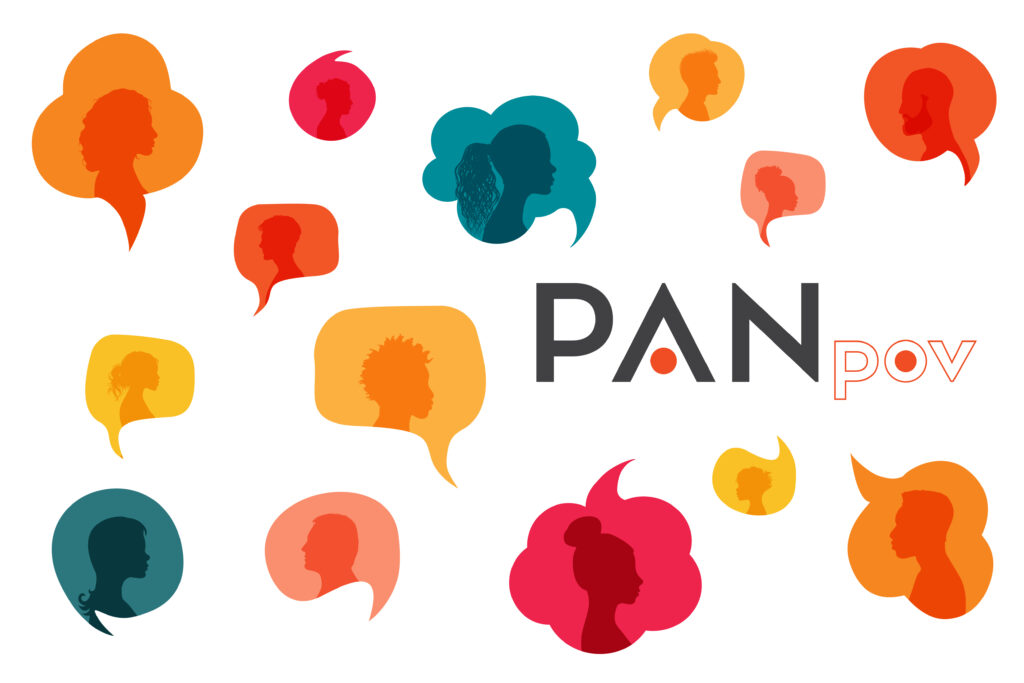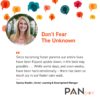This piece is part of our PANpov series — firsthand stories from employees about unique experiences they bring to integrated marketing, PR and communications. Read more.
I’ll never forget when my husband and I became parents overnight. Foster care was something we both felt called to, and, in January of 2022, we stepped into that space and became licensed foster parents, welcoming our first little one into our home in the spring of that year.
Since beginning our foster care journey, I’ve been asked many questions including:
- “What does it mean to foster?”
- “Did you foster so you could adopt?”
- “How can you foster? I could never; I would get way too attached.”
- “You’re pregnant and fostering?” (Yes — we started this journey while I was 12 weeks pregnant!)
Answering those questions is both complex and simple. Let me explain.
 Becoming a foster parent means you are opening your home directly to a child(ren) and indirectly to their family and the trauma involved with the family. These children are removed from their biological family members for a number of reasons including neglect, abuse and failure to protect the child. Your home and your family become a safe place for a temporary moment in a child’s life or, sometimes, forever.
Becoming a foster parent means you are opening your home directly to a child(ren) and indirectly to their family and the trauma involved with the family. These children are removed from their biological family members for a number of reasons including neglect, abuse and failure to protect the child. Your home and your family become a safe place for a temporary moment in a child’s life or, sometimes, forever. - Fostering does not equal adoption, and the goal initially should always be reunification and restoring a family. The child in your home is your number one priority — to advocate, protect and love them. But the secondary priority is to come alongside these families and walk with them, extending grace and compassion as they work on their case plan. In some instances, as things progress, it does become apparent that reunification is not possible or in the best interest of the child and adoption comes to the forefront, but fostering a child should not be a means to adoption from the get-go.
- We said “yes” to foster care because we knew there was a great need in our area. We felt a calling to it for a few years, and after praying about when to start and feeling peace, we pursued getting our license.
- When it comes to attachment, it’s what these little ones need. They need our love, affirmation, consistency and structure. Is getting too attached scary because of the potential heartbreak when they leave our care? Absolutely. But fostering isn’t about us. For me and my husband, it’s about trying to love like Jesus loves us, caring for the most vulnerable in our communities and being what a child needs in a time when they have nothing else. They are worth the love and attachment, every ounce you have to give.
- There is never a right or perfect time for anything. And watching our littles bond and love each other has been possibly the most unexpectedly sweet part of all of this. Their bond may not be blood, but they are brothers!
Since becoming foster parents our entire lives have been flipped upside down, in the best way possible. Quiet evenings have been replaced with dance parties before dinner. Slow weekends are now filled with playing at the park or doing arts and crafts. We’ve gotten a deep dive into our judicial system, partnering with case management, state attorneys and guardian ad litems in addition to supporting other foster families that are walking through their own cases or just beginning their journey.
While some days, and even weeks, have been hard emotionally, there has been so much joy in our foster care walk. The hugs and hearing “I love you, mom and dad,” the growth and change and ultimately the gift of giving love and grace has made any trying day more bearable.
Don’t fear the unknown; stepping into foster care boldly has truly been the biggest blessing and in the words of our little one. “We love him to the moon, stars and back” and always will.
Learn more about Life at PAN.



 Becoming a foster parent means you are opening your home directly to a child(ren) and indirectly to their family and the trauma involved with the family. These children are removed from their biological family members for a number of reasons including neglect, abuse and failure to protect the child. Your home and your family become a safe place for a temporary moment in a child’s life or, sometimes, forever.
Becoming a foster parent means you are opening your home directly to a child(ren) and indirectly to their family and the trauma involved with the family. These children are removed from their biological family members for a number of reasons including neglect, abuse and failure to protect the child. Your home and your family become a safe place for a temporary moment in a child’s life or, sometimes, forever. 